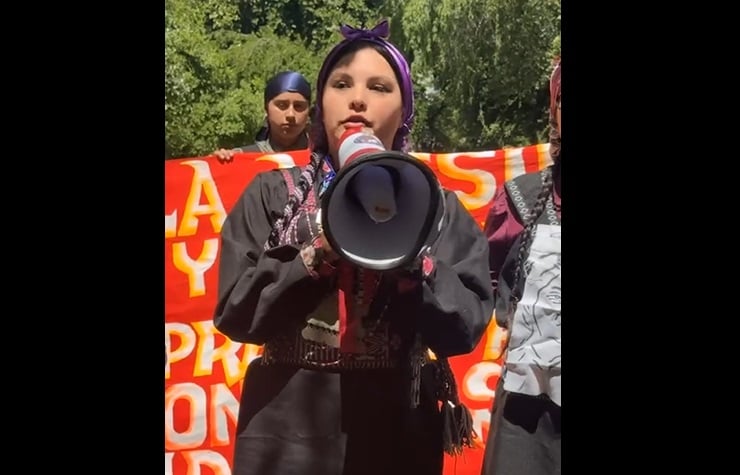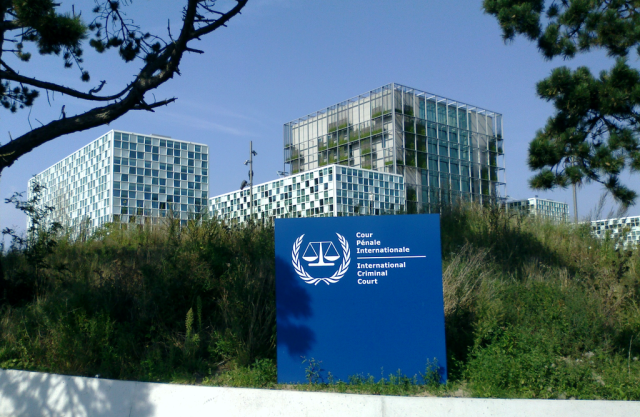They’re not even trying to hide it – Freedom of the Press Foundation

Report on Global Threats to Press Freedom and the Sustainable Development Goals
Introduction
This report analyzes recent incidents impacting press freedom, contextualizing them within the framework of the United Nations Sustainable Development Goals (SDGs). The findings indicate significant challenges to SDG 16: Peace, Justice and Strong Institutions, particularly Target 16.10, which seeks to ensure public access to information and protect fundamental freedoms. The incidents also reveal adverse impacts on SDG 2 (Zero Hunger), SDG 8 (Decent Work and Economic Growth), and SDG 10 (Reduced Inequalities).
I. Violations of Journalist Safety and Fundamental Freedoms (SDG 16.10)
Direct attacks on journalists and the legal harassment of media professionals represent a primary obstacle to achieving SDG 16.10. Recent cases highlight a pattern of intimidation, arbitrary detention, and legal persecution.
A. Arbitrary Detention and Legal Harassment
- Mario Guevara: A journalist imprisoned for over 41 days for covering a protest, representing a clear violation of the right to report on public assemblies.
- Rümeysa Öztürk: A journalist facing deportation by the U.S. government for 122 days due to an opinion piece, undermining the freedom of expression essential for strong institutions.
- Kentucky Journalists: Two journalists arrested while documenting a protest faced felony charges, which were later dropped. However, pending misdemeanor charges continue to represent a legal threat intended to chill reporting on civil dissent.
B. Intimidation by State Agencies
The actions of government bodies have been identified as a source of intimidation, directly impeding the work of journalists and contravening the principles of SDG 16.
- Immigration and Customs Enforcement (ICE): Reports from New York City indicate that ICE agents are harassing journalists in courthouses by photographing press credentials and falsely declaring public areas as restricted. This tactic intimidates reporters and limits public access to information on immigration proceedings, affecting both SDG 16.10 and SDG 10.
- Warrantless Surveillance: The U.S. government’s use of emergency authority to track the cellphone location of former FBI Director James Comey highlights a severe erosion of privacy. Such practices pose a direct threat to the confidentiality of journalistic sources, a cornerstone of investigative reporting and a key component of the protections outlined in SDG 16.10.
II. Systemic Pressures on Media Viability and Integrity
Beyond direct attacks, political and economic pressures threaten the sustainability of media outlets, which is crucial for informed public discourse and holding institutions accountable as envisioned in SDG 16.
A. Political Influence and Corporate Capitulation (SDG 16)
The settlement between Paramount Global and Donald Trump, involving a $16 million payment, is a significant concern. This action is viewed as a capitulation that compromises the journalistic integrity of its subsidiary, CBS News. Such acts of “bribery” to secure regulatory approval for a merger erode public trust and weaken the role of the media as an independent watchdog, fundamentally undermining the goal of building effective, accountable, and transparent institutions.
B. Economic Hardship and Information Gaps (SDG 8, SDG 10, SDG 11)
The closure of media outlets due to financial unsustainability has a disproportionate impact on marginalized communities, creating information deserts and exacerbating inequalities.
- Closure of Indian Time: After 40 years of serving the Mohawk Nation at Akwesasne, the newspaper ceased publication due to declining advertising revenue. This loss silences an essential Indigenous voice and limits access to locally relevant information, working against SDG 10 (Reduced Inequalities) and SDG 11 (Sustainable Cities and Communities) by weakening community infrastructure. It also reflects broader challenges to SDG 8 (Decent Work and Economic Growth) within the journalism sector.
III. Press Freedom in Conflict and Humanitarian Crises (SDG 2, SDG 16)
The ability of journalists to report from conflict zones is essential for global awareness and accountability. The situation in Gaza demonstrates a severe crisis that intersects with multiple SDGs.
A. Starvation and Restricted Access in Gaza
Major international news agencies have expressed alarm over the plight of journalists in Gaza, who face a dire threat of starvation. This crisis directly contravenes SDG 2 (Zero Hunger).
- Journalists are forced to prioritize searching for calories over reporting, severely limiting the flow of information from the region.
- Calls for Israeli authorities to allow journalists safe entry and exit and to ensure adequate food supplies reach the population underscore the link between humanitarian aid and the fundamental freedom of the press (SDG 16.10).
- Governments tolerating the killing and starvation of journalists in conflict zones bear complicity in these human rights violations and the suppression of information.
1. Which SDGs are addressed or connected to the issues highlighted in the article?
-
SDG 16: Peace, Justice and Strong Institutions
This is the most prominent SDG in the article. The text repeatedly discusses threats to press freedom, the safety of journalists, corruption, and the erosion of the rule of law. Specific cases like the deportation, imprisonment, and harassment of journalists, along with government surveillance and frivolous lawsuits, directly challenge the principles of justice, accountability, and fundamental freedoms that are central to SDG 16.
-
SDG 2: Zero Hunger
The article explicitly addresses this goal in the section “Journalists starve in Gaza.” It highlights the severe food shortages affecting journalists in the region, with a direct quote stating, “I used to chase the truth. Now I chase calories.” This connects the issue of press freedom in conflict zones to the fundamental human need for food.
-
SDG 8: Decent Work and Economic Growth
The closure of the “Indian Time” newspaper, which served the Mohawk Nation for over 40 years, is linked to this SDG. The article states the paper shut down due to “declining ad revenue,” a widespread economic pressure affecting the journalism industry. This represents a loss of decent work and the failure of a local economic entity, impacting the community’s access to information and employment.
2. What specific targets under those SDGs can be identified based on the article’s content?
-
Target 16.10: Ensure public access to information and protect fundamental freedoms, in accordance with national legislation and international agreements.
This target is central to the entire article. The numerous cases cited—Rümeysa Öztürk facing deportation, Mario Guevara’s imprisonment, harassment of journalists by ICE, arrests of journalists in Kentucky, and the killing of journalists in Gaza—are all violations of the fundamental freedom of the press. The article’s core purpose is to highlight these threats and advocate for the protection of journalists, who are essential for ensuring public access to information.
-
Target 16.5: Substantially reduce corruption and bribery in all their forms.
The article points to this target in the section on Paramount’s $16 million payment to settle a lawsuit with President Trump. The Freedom of the Press Advocacy Director is quoted as saying the payment has “everything to do with greasing the wheels of a corrupt administration.” The article further describes the situation as a “shakedown” and a news outlet “bribing the same officials it’s supposed to hold accountable,” which directly relates to combating corruption and bribery.
-
Target 16.3: Promote the rule of law at the national and international levels and ensure equal access to justice for all.
This target is relevant to the legal challenges faced by journalists. The “absurd felony rioting charges” against two Cincinnati journalists, which were later dropped to pending misdemeanors despite “zero evidence,” question the application of the rule of law. Similarly, the government’s use of “emergency authority to warrantlessly track” James Comey’s cellphone location is presented as an abuse of power and a threat to privacy and legal principles.
-
Target 2.1: By 2030, end hunger and ensure access by all people… to safe, nutritious and sufficient food all year round.
The section on Gaza directly connects to this target. The joint statement from major news agencies expresses alarm about the “terrible plight of journalists in Gaza, and particularly the risk of starvation.” The plea to “allow journalists in and out of Gaza” and ensure “adequate food supplies reach the people there” is a call to action to prevent hunger in a vulnerable population within a conflict zone.
-
Target 8.5: By 2030, achieve full and productive employment and decent work for all women and men…
The demise of the “Indian Time” newspaper illustrates a challenge to this target. The article explains that the paper, a source of employment and a vital community service for over 40 years, was forced to print its last edition due to economic pressures (“declining ad revenue”). This represents a loss of jobs and the collapse of a local enterprise, undermining decent work within that community.
3. Are there any indicators mentioned or implied in the article that can be used to measure progress towards the identified targets?
-
Indicator for Target 16.10 (Protect fundamental freedoms):
The article provides specific data points that align with Indicator 16.10.1 (“Number of verified cases of killing, kidnapping, enforced disappearance, arbitrary detention and torture of journalists…”). It explicitly mentions:
- The number of days a journalist faces deportation (“122nd day that Rümeysa Öztürk is facing deportation”).
- The number of days a journalist has been imprisoned (“41st day that Mario Guevara has been imprisoned”).
- Specific instances of arrests (two Cincinnati journalists in Kentucky).
- Reports of harassment (by ICE agents in New York City).
- References to the killing of journalists (in Gaza).
These cases serve as direct, qualitative, and sometimes quantitative measures of threats against journalists.
-
Indicator for Target 16.5 (Reduce corruption):
While not a formal statistical indicator, the article provides a clear qualitative case study of perceived corruption. The $16 million payment from Paramount to settle a “frivolous lawsuit” by a government official, followed by the approval of a corporate merger by that same administration’s FCC, is presented as evidence of bribery and corruption. This narrative serves as an anecdotal indicator of the prevalence of such practices.
-
Indicator for Target 16.3 (Promote the rule of law):
The article implies indicators related to the justice system’s treatment of journalists. The number of journalists facing legal charges without sufficient evidence (the Kentucky case) and instances of government surveillance without proper warrants (the Comey cellphone tracking) are presented as metrics of the erosion of the rule of law and due process.
-
Indicator for Target 2.1 (End hunger):
The article provides a qualitative indicator for hunger. The joint statement from Reuters, AP, BBC, and AFP expressing alarm about the “threat of starvation” for journalists in Gaza serves as an expert assessment of food insecurity. The quote, “Now I chase calories,” is a powerful first-hand account indicating a severe lack of access to sufficient food for this specific group.
-
Indicator for Target 8.5 (Decent work):
The closure of the “Indian Time” newspaper serves as a specific, anecdotal indicator of job loss and business failure in the media sector. The reason cited, “declining ad revenue,” points to a systemic economic vulnerability. The number of local or community-focused newspapers shutting down due to such economic pressures could be a broader, implied indicator of challenges to achieving decent work in this field.
4. Table of SDGs, Targets, and Indicators
| SDGs | Targets | Indicators |
|---|---|---|
| SDG 16: Peace, Justice and Strong Institutions | 16.10: Ensure public access to information and protect fundamental freedoms. |
|
| SDG 16: Peace, Justice and Strong Institutions | 16.5: Substantially reduce corruption and bribery in all their forms. |
|
| SDG 16: Peace, Justice and Strong Institutions | 16.3: Promote the rule of law and ensure equal access to justice. |
|
| SDG 2: Zero Hunger | 2.1: End hunger and ensure access to safe, nutritious and sufficient food. |
|
| SDG 8: Decent Work and Economic Growth | 8.5: Achieve full and productive employment and decent work for all. |
|
Source: freedom.press

What is Your Reaction?
 Like
0
Like
0
 Dislike
0
Dislike
0
 Love
0
Love
0
 Funny
0
Funny
0
 Angry
0
Angry
0
 Sad
0
Sad
0
 Wow
0
Wow
0














































































